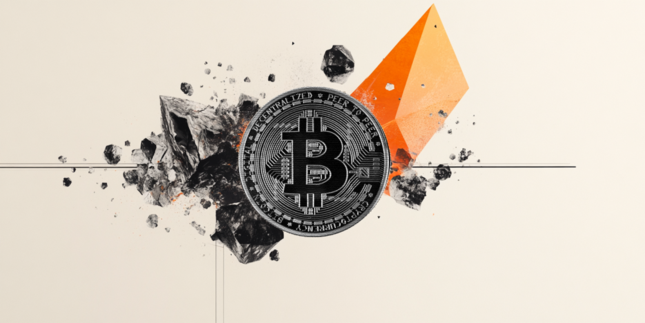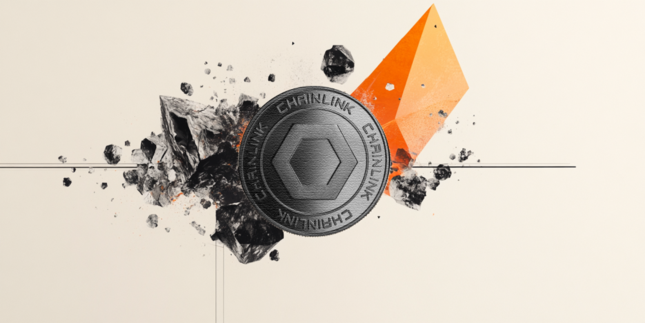In finance's fast-paced world, there are two separate environments: decentralized finance (DeFi) and traditional finance (TradFi). They each have their own strong points and weaknesses. If they work well together, it may create great possibilities for innovation, access and effectiveness like never before seen. But to build this connection, many different parties must put in effort; these include technologists as well as regulators or those involved with financial institutions and customers too.
DeFi uses blockchain technology that provides transparency, security, and efficiency. It gets rid of middlemen making costs lesser while also allowing direct person-to-person exchanges. Smart contracts automate rules and enforcement, decreasing trust requirements and boosting transaction speed. DeFi also gives financial assistance to the unbanked and underbanked, making finance available for everyone.
Traditional finance has a strong, long-lasting structure. It is built on trust and stability because it uses old systems that have existed for many centuries. This type of finance includes well-known institutions like banks, stock exchanges, and insurance companies which provide services to people around the world in a regulated environment.
TradFi is broad-reaching when it comes to its products and services variety. This reflects in its large networks along with customer bases. In traditional finance, also known as TradFi, you can find the same kind of stability and regulation that we observe in our common banking system. This makes use of age-old infrastructure such as banks, stock exchanges, or insurance providers who offer their assistance within a controlled industry worldwide.
If DeFi's novelty and TradFi's reliability are brought together, they might create a stronger financial system that is more efficient and open to all. For example, the technology of DeFi can make better processes in TradFi. This could reduce costs and speed up transactions. At the same time, rules for supervision and managing risk from TradFi might help lessen some risks connected with DeFi like security problems or market instability.
Now, some protocols are ready to give the necessary harmony for this combination. We have just talked with Credefi's CEO, Ivo Grigorov - it is a DeFi protocol that wishes to link with traditional services. Let's learn about their perspective on the industry
What are the possible synergies you see between DeFi and TradFi?
By democratizing access, DeFi makes financial services available globally without intermediaries, while integrating TradFi elements offers familiar and regulated instruments, ensuring broader acceptance and reach. DeFi’s automation through smart contracts streamlines processes, reducing transaction times and operational costs, especially in lending, borrowing, and trading. Blockchain technology provides unparalleled transparency, and its integration with TradFi enhances the auditability of financial operations. The decentralized nature of DeFi reduces central points of failure, and when combined with TradFi’s risk management practices, it creates a more resilient financial system. Innovative financial products like NFT corporate bonds and tokenized assets emerge from combining DeFi and TradFi, expanding investment opportunities. DeFi protocols enhance liquidity for traditional assets through decentralized exchanges and liquidity pools, improving market efficiency and price discovery. Finally, integrating DeFi’s transparent systems with TradFi’s regulatory frameworks helps mitigate transaction risks, ensuring compliance while leveraging technological advancements. Our commitment to these synergies drives our innovations, as seen in our partnerships and product enhancements, bridging the gap between DeFi and TradFi for a more inclusive, efficient, and secure financial ecosystem.
How does Credefi look to bridge this gap?
Credefi is at the forefront of bridging the gap between decentralized finance (DeFi) and traditional finance (TradFi) through strategic initiatives and innovations that leverage the strengths of both systems. We’re hoping that our service will offer seamless transitions between fiat and crypto, and we want to build partnerships to help bring this objective to light.
For instance, one of our partners, Nilos, helps to democratize access to financial tools, making them available to retail investors who previously lacked such opportunities. Another partner, DWF Labs, will further enhance liquidity, which is crucial for integrating traditional financial markets with decentralized platforms.
I’ll also briefly mention the $CREDI and $xCREDI tokens, which help to improve platform participation. $CREDI holders benefit from yield boosts, reduced fees, insurance for lender protection, and increased APY for stablecoin investments, while $xCREDI holders gain governance rights, a share in the project's yearly revenue, and instant ROI opportunities. It is our hope that these tokens will be able to show users why they need to be on our platform, and the utility we offer.
Through these comprehensive initiatives, we strive to effectively bridge the gap between DeFi and TradFi, creating a more inclusive, efficient, and secure financial ecosystem. We have a commitment to redefining the overall financial landscape.
What do you view the regulatory landscape surrounding DeFi as in the coming years?
Developing comprehensive regulatory frameworks for DeFi platforms is crucial.
Collaboration between international regulatory bodies, such as the FATF, IMF and G20 is happening with a goal to make unified guidelines for digital assets. Their focus lies on anti-money laundering (AML) and combating the financing of terrorism (CFT). This teamwork hopes to simplify cross-border transactions along with making tax regulations more clear-cut, thus securing a uniform worldwide regulatory environment.
Regulatory initiatives that are successful will help in the combining of DeFi with TradFi. This is important for tokenizing assets and making fresh financial items. Such blending is crucial to draw institutional capital and maintain compliance.
CBDCs' regulation also affects DeFi. Countries are starting pilot projects with CBDCs and creating plans to bring these digital currencies into the current financial systems, which encourages worldwide financial stability and compatibility.
To sum up, the DeFi regulatory environment is changing with worldwide collaboration, protection for consumers and integration into TradFi. These elements are setting the stage for a safe and inventive financial system. Our platform promises to adjust itself according to these transformations by keeping compliance and innovation at its core.
Does your protocol take any of its working principles from traditional crypto?
Yes, we use certain main ideas from old cryptocurrency systems. We make use of blockchain technology for making sure that transactions are clear, safe and unchangeable. Smart contracts play a central role by allowing automated and trustless transactions which lessen the necessity for go-betweens and decrease human mistakes. We also follow the principle of decentralization, spreading control through our governance token to increase security and strength. Tokenization is a key element of our operations, with emphasis on RWA collateral and NFT bond issuing. Finally, we are preparing for direct transactions between individuals which will cut down costs altogether by diminishing dependency on middlemen. We combine these rules to close the space between decentralized finance (DeFi) and traditional finance (TradFi). This helps in building a safe, effective and equal financial system.
How were you able to select the blockchain you wanted to build on? What traits stood out the most to you?
We selected Ethereum as our blockchain foundation because of multiple important factors, not just because we believe ERC-20 is the best choice in industry.
The reason for choosing Ethereum is its strong security measures and track record of keeping transaction integrity. It has been leading in smart contracts, which allow us to automate transactions - very important for putting complex financial tools into use on our platform.
Previously, it was clear that Ethereum had some problems with scalability. But, this issue is being solved by continuous upgrades such as Ethereum 2.0. The big and active community of Ethereum helps in fast development and ongoing innovation - an aspect not to be overlooked. Additionally, the extensive use of Ethereum and its compatibility with other blockchains as well as traditional financial systems guarantee smooth connection to a variety of services. In total, it is an adult ecosystem with many tools and libraries. This lessens the time and money needed for development, enabling us to introduce inventive answers in a prompt manner to market.
Yet, we have not confined ourselves to this. It is a logical choice and big base, but our goal is much more extensive - we want to be interoperable. At present, integration with XRPL has been completed while BSC integration will happen shortly.
Conclusion
In the future, as the financial world expands, there is a possibility that both centralized and decentralized finance models will integrate with each other. With more platforms working towards this goal, hopes for a more connected financial model are still very high - particularly in coming times.
Note: All information on this page is subject to change. The use of this website constitutes acceptance of our user agreement. Please read our privacy policy and legal disclaimer. Opinions expressed at FXstreet.com are those of the individual authors and do not necessarily represent the opinion of FXstreet.com or its management. Risk Disclosure: Trading foreign exchange on margin carries a high level of risk, and may not be suitable for all investors. The high degree of leverage can work against you as well as for you. Before deciding to invest in foreign exchange you should carefully consider your investment objectives, level of experience, and risk appetite. The possibility exists that you could sustain a loss of some or all of your initial investment and therefore you should not invest money that you cannot afford to lose. You should be aware of all the risks associated with foreign exchange trading, and seek advice from an independent financial advisor if you have any doubts.
Recommended Content
Editors’ Picks

Crypto Today: Metaplanet raises $10M to buy BTC, ETH price moves below $1,600 as Tron gains signals panic
The cryptocurrency aggregate market capitalization stabilized around $2.7 trillion on Wednesday, with Bitcoin’s $84,000 support momentarily anchoring the market against external bearish discourses.

Chainlink active addresses drop as whale selling spikes, could LINK crash below $10?
Chainlink active addresses slide dramatically to 3,200 from February’s peak of 9,400. The downtrend in network activity coincides with increasing selling activity among whales with between 10 million and 100 million LINK.

Bitcoin stabilizes around $83,000 as China opens trade talks with President Trump’s administration
Bitcoin is stabilizing around $83,500 at the time of writing on Wednesday after facing multiple rejections around the 200-day EMA at $85,000 since Saturday. A breakout of this strong level would indicate a bullish trend ahead.

Binance Chain completes $914M BNB token burn, hinting at a potential rally
Binance Chain has finalized its programmed 31st quarterly BNB token burn, potentially setting the stage for the world’s fifth-largest cryptocurrency, with a market capitalization of $81.45 billion, to rally in the coming weeks.

Bitcoin Weekly Forecast: Market uncertainty lingers, Trump’s 90-day tariff pause sparks modest recovery
Bitcoin (BTC) price extends recovery to around $82,500 on Friday after dumping to a new year-to-date low of $74,508 to start the week. Market uncertainty remains high, leading to a massive shakeout, with total liquidations hitting $2.18 billion across crypto markets.

The Best brokers to trade EUR/USD
SPONSORED Discover the top brokers for trading EUR/USD in 2025. Our list features brokers with competitive spreads, fast execution, and powerful platforms. Whether you're a beginner or an expert, find the right partner to navigate the dynamic Forex market.